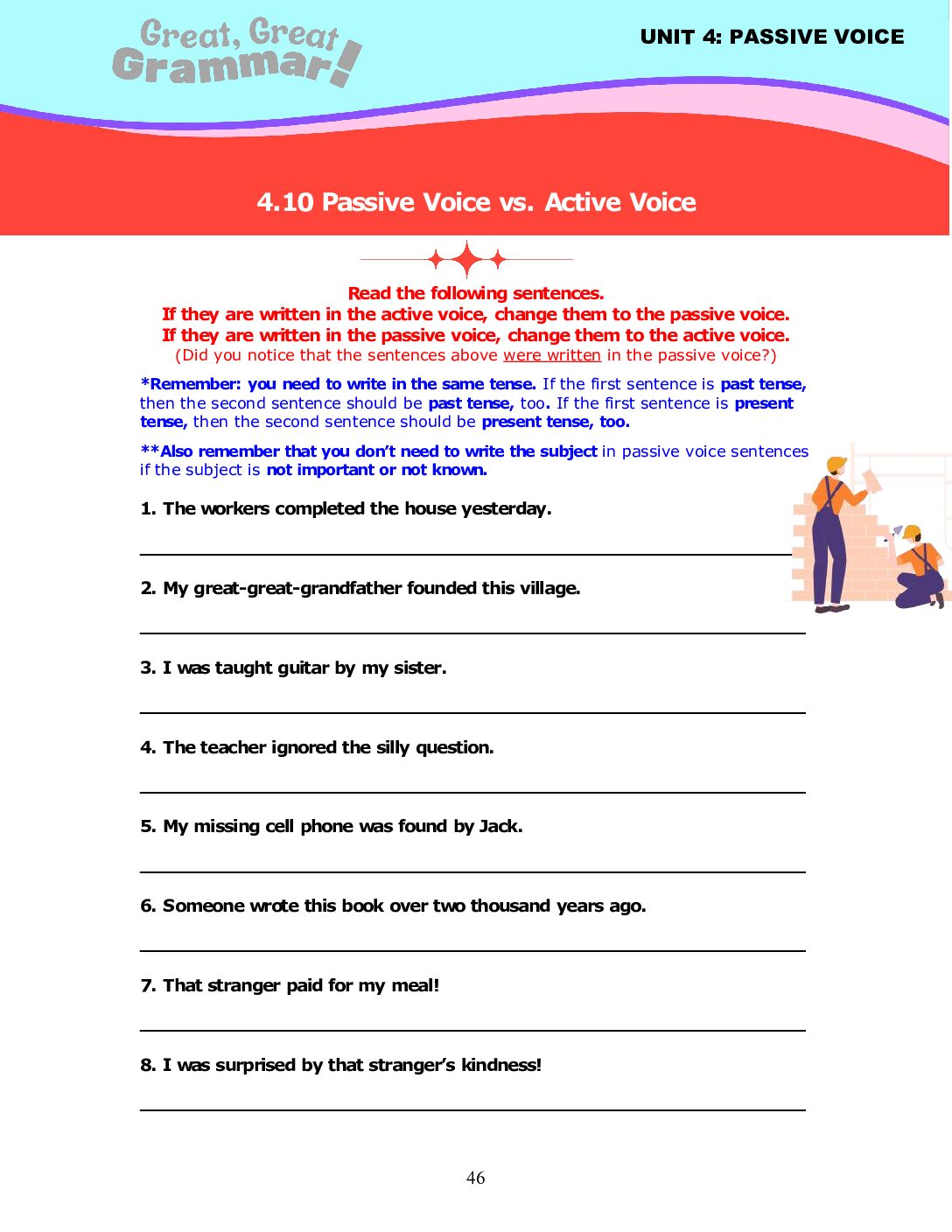In this ESL grammar lesson, students rewrite sentences in the passive voice as active voice sentences, and sentences in the active voice as passive voice sentences.
Mastering the use of active and passive voice is essential for clear and effective communication in English. Knowing when and how to use each voice can significantly enhance your writing and speaking skills. Let’s review the key differences between active voice and passive voice, along with examples and guidelines on their appropriate usage.
ESL Grammar: Key Differences Between Active and Passive Voice
- Focus:
- Active Voice: Emphasizes the doer of the action.
- Example: The teacher explains the lesson.
- Passive Voice: Emphasizes the action or the recipient of the action.
- Example: The lesson is explained by the teacher.
- Active Voice: Emphasizes the doer of the action.
- Clarity:
- Active Voice: Provides clear and direct sentences.
- Example: The team won the game.
- Passive Voice: Can be used to add formality or to focus on the action.
- Example: The game was won by the team.
- Active Voice: Provides clear and direct sentences.
- Usage:
- Active Voice: Preferred in most writing and speaking for its clarity and brevity.
- Passive Voice: Useful in formal writing, scientific reports, and when the doer is unknown or irrelevant.
The English grammar lesson below gives students a chance to practice switching between the active voice and the passive voice. Our series of ESL grammar lessons on subjects and verbs introduce these concepts and reinforce them through helpful and instructive exercises.
This lesson is available for free download, and you can download many more English grammar lessons focusing on advanced aspects of English grammar (past continuous tense, present perfect tense, present perfect continuous tense, passive voice, embedded questions, relative clauses) in our comprehensive, intermediate- to advanced-level ESL grammar textbook Great, Great Grammar! (Book 3: Tenses and More!).

